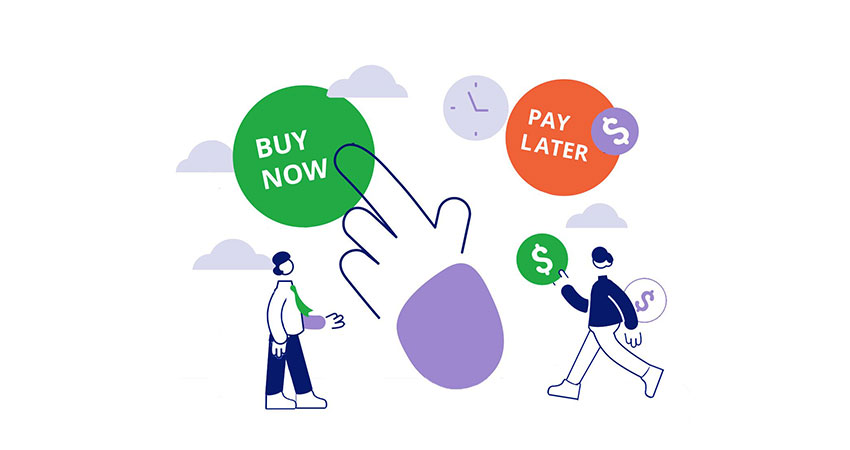A few years ago, you’d be hard pressed to find an ecommerce retailer offering buy now, pay later (BNPL). Today, it’s surprising not to see the option advertised at checkout. Since 2018, the number of BNPL users in America has more than tripled, and as of last fall almost half of U.S. consumers said they were on the pay-later bandwagon.
This striking rise in popularity is linked to the service’s inherent simplicity. Unlike layaway plans of old, BNPL customers get immediate access to their goods, settling the bill gradually over time. It’s a useful way to navigate particularly expensive periods, such as Christmas and birthdays, without the pain of a lump sum payment.
It’s a good setup for merchants too, despite having to pay their BNPL provider a per-transaction fee. According to a recent survey, 33% of businesses offering pay-later options see a growth in revenue, while reports suggest a clear link between BNPL and increased order volume. This is thanks to the lower upfront costs that consumers have to meet, coupled with a seamless system of subsequent payments.
The Bad Side of BNPL
This lack of friction has a flip side, however, making it easier for consumers to purchase more than they can afford. As such, fears around BNPL-related debt are rising, with consumers — particularly younger ones — pulled in by the allure of an affordable first payment, then struggling to meet further installments. While pay-later schemes typically carry no interest, they do often impose late fees.
Worryingly, a third of all BNPL customers in America say they’ve fallen behind on one or more payments, according to a September survey from Credit Karma, with more than 50% of Gen Z and millennial users admitting that they’ve missed at least one deadline. It’s a similar story in other parts of the world. Almost half of BNPL customers in the UK are said to be struggling with household bills, according to a December survey from YouGov, while one in eight youngsters with outstanding pay-later obligations claim to have been chased by debt collectors.
Alarmed at the rising tide of BNPL debt, governments on both sides of the Atlantic are drawing up new rules to safeguard shoppers. As it stands, however, buyers unable to meet monthly payments have little in the way of support. This is where the threat of friendly fraud comes in.
Chargeback Fraud
Behind on their dues or stung with a healthy dose of buyer’s remorse, customers may try to exploit chargeback systems, illegitimately recouping costs for items that they don’t return.
In BNPL scenarios, it is the payment plan provider — not the merchant — that is liable, which is why Affirm, Afterpay, Klarna and others should protect themselves with chargeback mitigation solutions.
Merchants, despite not being in immediate danger, should also consider these mitigation services. While BNPL programs shield merchants from chargeback fraud associated with a specific deferred payment, there’s also a risk that consumers could find themselves overburdened by debt, and wind up disputing subsequent conventional credit or debit card payments at an elevated rate, increasing merchants’ net exposure to friendly fraud.
Mitigation Measures
There are a number of other ways that merchants and BNPL providers can stave off the threat of chargeback fraud. The first is using clear billing descriptors so customers know precisely who’s charged them for a purchase. If, for example, someone uses Affirm to buy a pair of headphones from an online shop, their credit card statement should note that the payment was made to the pay-later provider, but for the specific retailer’s product.
The second is something ecommerce brands should be striving for anyway: Good customer service. If shoppers feel like they’re being looked after, the temptation to launch an illegitimate chargeback claim will be lower. In practical terms, that means providing quick responses to queries, being transparent about how long an answer may take, and ensuring details are passed from one customer support agent to another so there’s no need to double back.
A third tip to reduce the risk of chargeback fraud is making sure terms and conditions are crystal clear, particularly when it comes to returns. Afterpay, a behemoth of the BNPL space, sets a good example on this front. The firm’s Australia site spells out unambiguously how refunds work with third-party sellers. By laying this information out in black and white, Afterpay gives customers a better chance of understanding how to make a legitimate return, rather than resorting to chargeback. Likewise, if a fraudulent chargeback claim is made, having clear terms and conditions heightens the likelihood of it being overturned.
A final piece of advice for BNPL providers. Screen each and every merchant you plan to work with, before putting pen to paper. If they have a high level of chargebacks, proceed with utmost caution, as it’s you who’ll be responsible for settling BNPL-related claims.
A Welcome Innovation
Pay-later programs are a welcome innovation. They allow shoppers to buy what they want without committing eye-popping amounts of cash up front. It’s a good deal for merchants, too, who see higher sales and larger order volumes.
But with the growing risk of chargeback fraud, as more consumers fall behind on payments, neither the BNPL provider nor the merchant is safe. The former is financially liable if a claim is made, while the latter could see elevated rates of friendly fraud for conventional transactions as customers feel the weight of the debt they’ve taken on. Neither, as a consequence, can afford to neglect chargeback mitigation measures.
Roenen Ben-Ami is cofounder and Chief Risk Officer of Justt.ai

